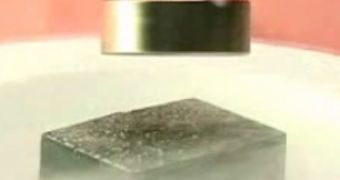Superconductivity is a property of materials exhibited through zero electrical resistance while being cooled to temperatures close to absolute zero. However, aside the vast majority of materials that require such low temperatures, there is a series of special materials, mostly ceramics, which experience zero electrical resistance at temperatures as high as -173 degrees Celsius, equivalent to 100 Kelvin. Whether materials can be forced into superconductivity at temperatures as high as room temperatures is currently unknown, albeit the invention of such as composite could give birth to a potentially limitless number of applications.
For now, physicists just have to restrict their study into high-temperatures superconductors. Researchers from the Massachusetts Institute of Technology have taken one more step forward into the study of high-temperature superconductors by discovering a property that may obliterate all the previous theories into the state of matter which initiates the superconductivity state into a given material.
Most metals used today into electrical and electronic applications possess a certain level of electrical resistance, which converts part of the electric current flowing through them into heat. That may not be such a big problem for electronic devices, however, while considering the fact that some of the electrical lines transporting electrical current can be hundreds, maybe thousands of kilometers long, the loss of power through electrical resistance becomes massive. Superconductors, on the other hand, have not electrical resistance, thus they do not lose power through heat dissipation, which allows them to carry larger current densities. In fact, a current induced through a closed loop superconductor could theoretically circle the conductor forever.
Lead author of the study, Eric Hudson, MIT assistant professor of physics, first looked at the state of matter that initiates the superconductivity, called pseudogap. During the superconductivity stage, all electrons inside the material have the same level of energy, which prevents them from scattering, in order to allow a flow of current without any electrical resistance. Albeit it turns out that not very much is known about this state of matter either.
Hudson believed that the properties of electrons while in a pseudogap state were determined mostly by the state of the impurities in the material, meaning that part of the atoms inside the material were either missing or replaced by atoms of other materials, to explain the supplemental levels of energy achieved by electrons in the superconductivity gap. With the help of a scanning tunneling microscope, MIT researchers showed that the scattering of electrons does not only occur in the pseudogap, but in the superconductivity gap as well, meaning that the two states of matter may actually be one and the same.
The canning tunneling microscopy technique is generally used in the study of both superconductivity and pseudogap states of matter, and, by comparing them, researchers can reveal whether a given material is a good high-temperature superconductor or not.

 14 DAY TRIAL //
14 DAY TRIAL //